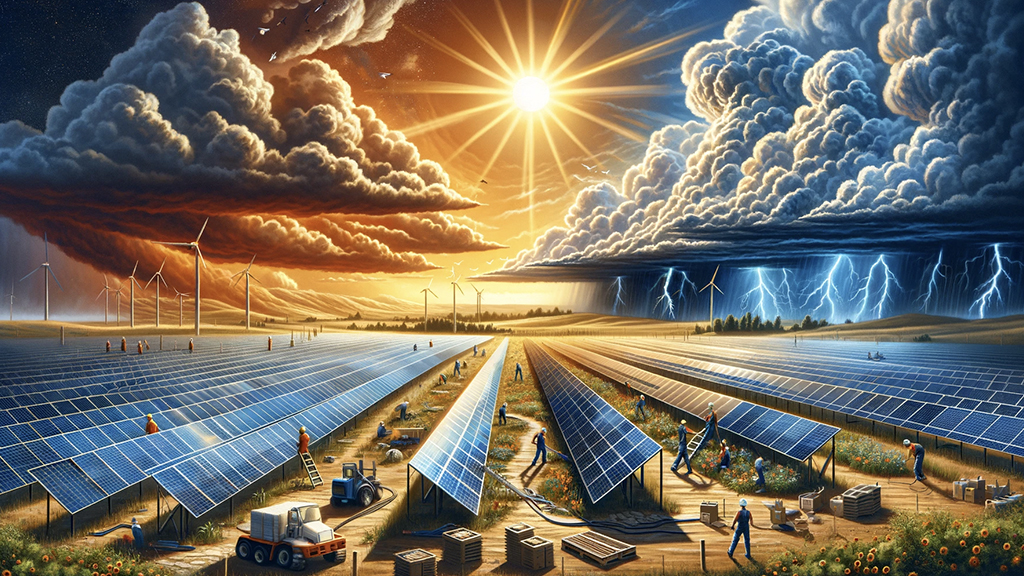 Introduction to Risk Management in Photovoltaic Farms
Introduction to Risk Management in Photovoltaic Farms
The development of photovoltaic (PV) farms is crucial in the transition to renewable energy sources. However, each PV project carries certain risks that require effective management. In this article, we will look at the most important of these risks and strategies for minimizing them.
Weather Conditions: An Unpredictable Factor in PV Farms
One of the biggest challenges in PV farm projects is the variability of weather conditions. Extreme phenomena, such as storms, hail, or prolonged precipitation, can significantly affect the efficiency and durability of solar panels. Therefore, it is crucial to design farms with local climate considerations and to use technologies resistant to extreme conditions.
 Technical Aspects of Building PV Farms
Technical Aspects of Building PV Farms
Another important element is technology. Choosing the right solar panels, inverters, and mounting systems is key to the efficiency and longevity of the farm. Additionally, the technical risk associated with new, untested technologies that can affect the reliability of the entire system must be considered.
Logistics and Project Management: Key to Success
Logistics and project management are other areas where risks arise. Ineffective time, human resource, and material resource management can lead to delays and increased costs. Therefore, it is important to use proven project management methods and effective communication between all stakeholders.
 Summary: Balancing Risk and Efficiency
Summary: Balancing Risk and Efficiency
Risk management in PV farm projects is a process that requires attention to many aspects – from weather conditions, through technology selection, to logistics and project management. The key to success is knowing potential hazards and effectively minimizing them, which will enable the achievement of optimal efficiency and profitability in renewable energy investments.







